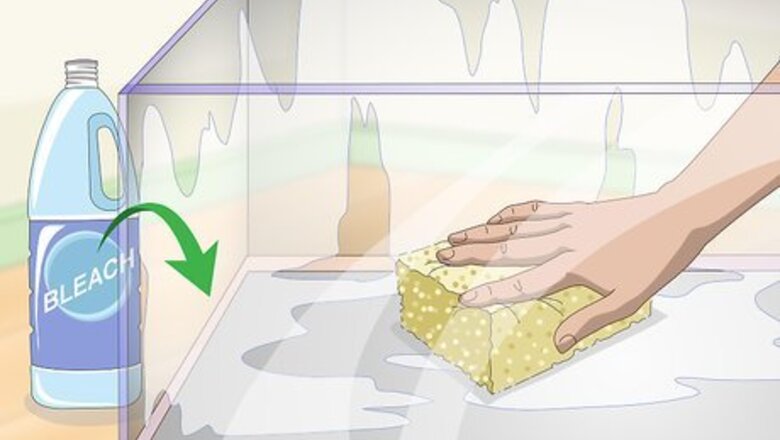
views
Setting Up the Aquarium
Provide at least 450 square inches of floor space for two gerbils. Get a new aquarium at a pet store or clean out an aquarium that was previously used for fish. Check the aquarium for cracks or other damage before you use it for your gerbils. Never use a plastic gerbil habitat. They look like fun, but gerbils can easily chew through them and escape. Aquariums are easier to clean and safer for your gerbils than a wire cage. Gerbils can damage their teeth by gnawing on the bars of a wire cage.

Clean the aquarium with a sponge and a water and bleach solution. Fill the tank with 1 in (2.5 cm) of warm water and put in 1 tsp (4.9 mL) of bleach. Use a clean sponge to wipe the sides, then dump out the water, rinse the tank thoroughly with clean water, and dry it with a clean towel. You can use this same method to clean out your gerbils’ tank anytime it gets dirty. Just be sure to rinse it thoroughly to remove any traces of bleach and dry it off with a clean towel before you put your gerbils back in.
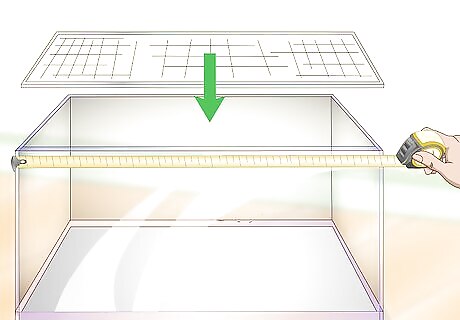
Measure your aquarium and buy a mesh lid and aquarium lid clips. It’s important to use a screen lid so that your gerbils can breathe in the aquarium. Slide the lid clips on to the lid and the sides of the tank to clip the lid securely in place. You can get a mesh lid for your aquarium at a pet store. They are the same kind that they use for reptile tanks. You can find a mesh lid with a door in it, or cut one in the middle of it yourself, so that you can easily reach into the gerbil cage without removing the entire lid.
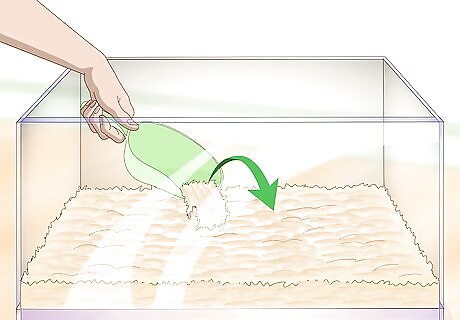
Fill the bottom of the aquarium with aspen bedding and some shredded paper. Put at least 6 in (15 cm) of aspen bedding in the bottom of your gerbil cage. Add a shredded sheet of clean paper or 3-4 torn up tissues for the gerbils to build nests with. Never use pine or cedar bedding in your gerbil cage. Pine and cedar bedding may cause respiratory problems, liver damage, and skin problems in gerbils. You can also add old toilet paper rolls or paper towel rolls to the cage for the gerbils to chew on and make nests from.
Adding Accessories

Install a water bottle in the aquarium. Buy a rodent water bottle and water bottle holder that you can hang or attach to the inside of the aquarium. Make sure the spout is at least 2 in (5.1 cm) above the bedding. Gerbils will pile up the bedding in the cage, so it’s important that the spout of the water bottle is high enough that it won’t leak onto the bedding or get clogged with wood chips.

Put in a glass, ceramic, or metal food dish. Gerbils will chew through anything plastic, so don’t use a plastic food dish. Get a food dish from the pet store or use something suitable you already have at home. Wash it out with warm water and soap before you put it in the cage. Make sure the dish is heavy enough that it will not tip over. A dish about 3 in (7.6 cm) in diameter and 1.5 in (3.8 cm) deep is suitable for your gerbils. They love to scatter their food, so it is not necessary to provide a bigger dish because they will most likely grab some food out and go eat it somewhere else rather than all be eating out of the dish at once.
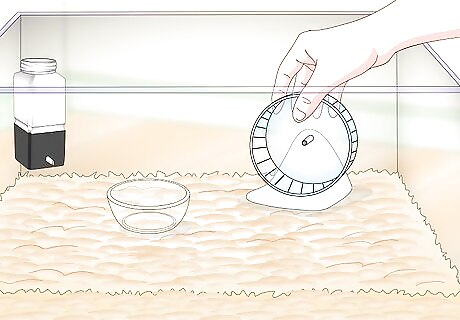
Add a mesh exercise wheel and some toys. Buy a mesh wheel and toys like chew toys and ramps or houses to climb on. It’s important to use a mesh wheel and not a wire one because gerbils can get their tails caught between the slats of a metal wheel. You can find all kinds of toys and wheels for your gerbils in the rodent section of a pet store. Ask the employees if you need any help picking things out. Gerbils are very active and curious animals who need lots of exercise, so it’s important for them to have a variety of activities available in their cage. Provide at least 2-3 toys and things to climb on for every 2 gerbils to stimulate them without overcrowding their cage.
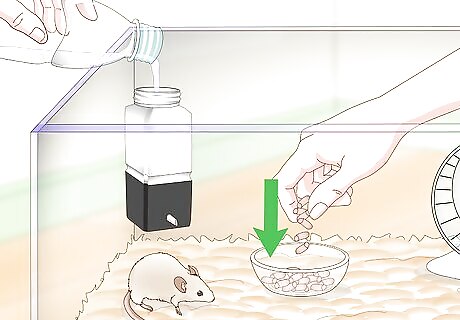
Put food and water in the cage and introduce your gerbils to their home. Fill up the water bottle with clean tap water and put some gerbil food mix in the food dish. Gerbil food mix is a special mix available at pet stores that will provide the main component of your gerbils’ diets. Supplement your gerbils’ regular food with some fresh fruits and vegetables. Put small amounts in at a time because the gerbils will probably cover it up with bedding when they are full. Try fruits like apple, orange, pear, and melon. Some good vegetables for gerbils are carrot, cucumber, and cauliflower. You can also scatter some food mix around the cage to allow the gerbils to practice their natural foraging behavior.
Choosing Where to Put the Cage
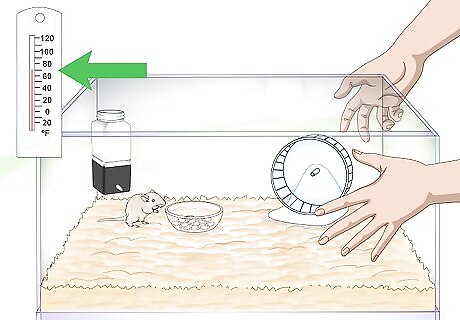
Put the cage in a room where the temperature stays between 65 °F (18 °C) and 80 °F (27 °C). As a general rule, if the temperature in the room is comfortable for you, then it is fine for the gerbils. Don’t put the cage next to a radiator, air conditioner, or other sources of hot or cold air. In the wild, gerbils have burrows to keep them out of the hot or cold, but in their aquarium, they do not have enough space for a burrow. It’s important to keep them in a comfortable temperature range in your home. Keep the cage away from windows where the sun would shine directly into it.
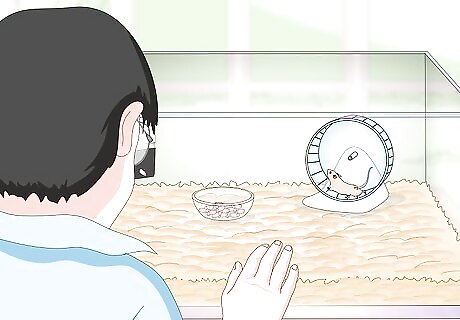
Place the aquarium where you will have daily contact with the gerbils. Make sure the cage is somewhere where you will see it every day so you remember to interact with your gerbils. This will help you keep a close eye on their food, water, and litter too. It’s easy to get used to having your gerbils and leave them to themselves, but it’s important to keep an eye on them and interact with them regularly to build a good bond with your pets.

Choose a location where you can easily supervise if you have young children. Gerbils are small and delicate creatures. Make sure that young children handle them where you can keep an eye on them and teach them how to properly handle the animals. A public space like the living room where the whole family is together is a good location for your gerbils’ home. Make a rule that your kids can only take the gerbils out when you are around until you are confident that they know how to handle them with care.




















Comments
0 comment